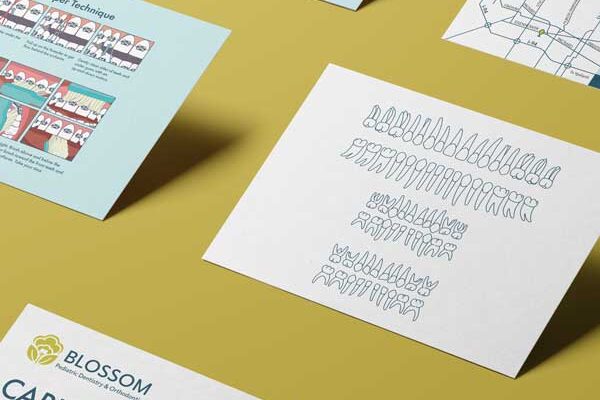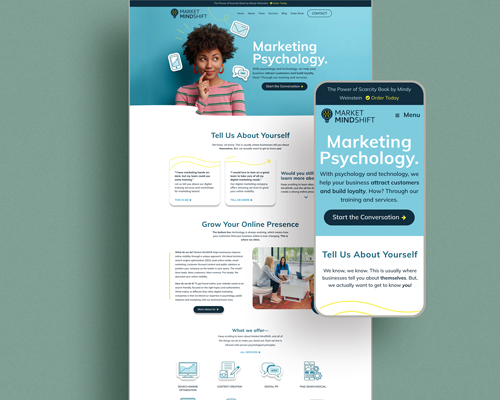7 Best Practices for Digital Ad Creation
Creating digital ads that capture attention and drive results is both an art and a science. Whether your goal is to increase brand awareness, boost traffic, or generate leads, following a few essential best practices can significantly improve the performance of your ads. In this blog, we’ll explore the seven best practices for digital ad creation and why they matter.

1. Know Your Audience
One of the most crucial elements of creating an effective ad is understanding your target audience. Knowing who your audience is allows you to tailor your messaging and visuals in a way that resonates with them. This process starts by creating detailed customer personas that reflect the demographics, interests, and behaviors of your ideal customers.
Consider where your audience spends most of their time online. Are they on Facebook, Instagram, or LinkedIn? What kind of content do they engage with? By answering these questions, you can create ads that speak directly to your audience and address their specific needs or pain points.
2. Use Clear and Compelling Visuals
Visuals are often the first thing users notice in an ad, so making sure your images, graphics, or videos are eye-catching is essential. High-quality visuals create an immediate connection between your brand and the user. Whether you’re using bold colors or sleek, minimalist designs, the visual style should complement your brand and message.
For instance, using bright colors may be effective for social media ads, where grabbing attention is the priority. On the other hand, more neutral tones may be better suited for professional settings. But remember: no matter what style you choose, ensure the visuals are aligned with your message and help draw the user’s focus to your CTA.
3. Craft a Strong, Concise Message
Your message is the core of your ad, and it needs to be clear, concise, and compelling. Avoid overwhelming users with too much text. Focus on a single idea or benefit, and let that drive your message forward. A strong call-to-action (CTA) is essential—users need to know exactly what to do next. Whether it’s “Shop Now,” “Learn More,” or “Sign Up Today,” your CTA should prompt users to take immediate action.
Remember that less is more when it comes to copy. In digital ads, you don’t have much space to capture attention, so your message should be delivered quickly and effectively.
4. Incorporate A/B Testing
A/B testing is a critical component of any successful digital advertising campaign. Testing multiple variations of an ad allows you to understand what resonates best with your audience. By experimenting with different headlines, images, CTAs, or layouts, you can optimize your ads for better performance.
A/B testing isn’t a one-time process—it should be ongoing. Constantly testing and refining your ads ensures that they continue to perform at their highest level. Use the insights you gain from testing to adjust future campaigns and improve overall effectiveness.
5. Design with Purpose
Effective design is more than just making an ad look good; it’s about creating a seamless and functional experience. The design should serve the purpose of guiding the viewer’s eye toward the most important elements—usually the headline, visuals, and CTA.
A well-designed ad is not cluttered. It uses space wisely, allowing each element to breathe. Too much text or too many competing visuals can overwhelm users, leading to confusion or inaction. White space can be your best friend when designing an ad, as it helps focus attention on key elements without creating visual noise.
Additionally, when designing digital ads, you need to consider the platform you’re using. An ad that performs well on Instagram might not translate well on LinkedIn or Google Display Ads. Ensure your design is optimized for the platform’s specific requirements and user behavior.
6. Prioritize Mobile Optimization
Mobile devices account for the majority of web traffic, so ensuring that your digital ads are optimized for mobile is crucial. A mobile-optimized ad should be easily viewable and clickable on a smaller screen without requiring zooming or excessive scrolling.
When designing for mobile, keep the text short and impactful, and ensure that the CTA button is large enough to be tapped easily. Test how your ad performs across different devices, including smartphones and tablets, to ensure it looks and functions as expected.
7. Leverage Retargeting for Maximum Conversions
Retargeting is one of the most powerful tools in digital advertising. By showing ads to users who have already visited your website or interacted with your brand, you can stay top-of-mind and encourage them to take action. Whether it’s an ad that reminds them about a product they viewed or one that offers a discount for completing a purchase, retargeting allows you to re-engage users who are already interested.
The beauty of retargeting is its ability to create highly personalized ads. For example, if a user has left items in their cart, a retargeting ad can remind them to complete the purchase, sometimes offering an incentive like free shipping or a discount to sweeten the deal.
Conclusion
Creating effective digital ads is about finding the right balance between creativity and strategy. By understanding your audience, using compelling visuals, crafting a concise message, and optimizing your design, you can create ads that not only capture attention but also drive conversions. In today’s fast-paced digital world, it’s essential to stay flexible—testing and refining your approach as you go. With these best practices in place, your digital ads will be well-positioned for success.
Whether you’re looking to create display ads, social media ads, or search ads, these best practices can help you improve your ad performance and achieve your marketing goals. At Mash Creative Co., we specialize in creating high-performing digital ads that drive results. Contact us today to see how we can help elevate your ad strategy.



Ad Designs by Mash Creative Co.



